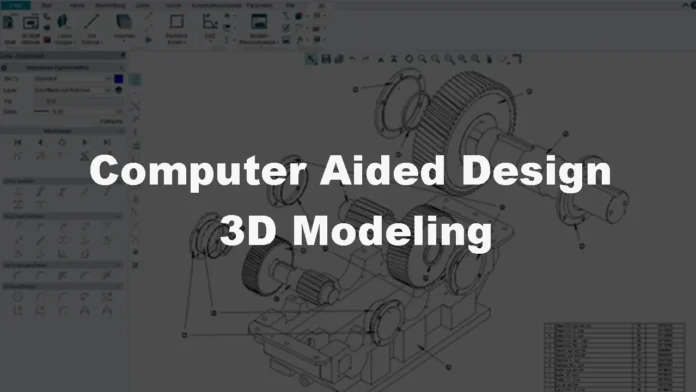Computer-aided design (CAD) has become an indispensable tool for engineers, architects, and product designers to create the products of tomorrow. With its powerful capabilities, such as 3D modeling, virtual collaboration, and high-accuracy draftsman tools, CAD helps accelerate the design process from concept to reality faster than ever before.
Whether it’s designing airplanes or creating components for a space shuttle mission, no project is too big or complex for the power of CAD! In this blog post, we’ll be diving into the world of CAD and uncovering just how far its abilities go in helping shape our future possibilities.
Understanding the Basics of CAD and its Benefits
Computer-aided Design, commonly known as CAD, refers to the use of computer software in creating designs, technical drawings, and models. CAD software is not only used in the architectural and engineering industries but is also popular in product development, animation, and game design.
The software enables designers to create accurate 2D and 3D designs by using automated processes. The use of CAD has numerous benefits, such as improving accuracy, reducing errors, and streamlining the design process, making it more efficient.
CAD software also allows for greater collaboration among stakeholders, making it easier to share designs and get feedback in real time. With its numerous benefits, it is no wonder that CAD has become an indispensable tool in the modern design industry.
Key Components of a CAD Modeling Process
In the world of design and engineering, CAD modeling processes have become a foundational element in creating innovative and precise products. There are several key components that make up this process, each playing its own integral role.
The first step is creating a conceptual design, which serves as the foundation for the project. Next, the team moves on to creating the framework of the design, where the main components are defined and the essential details are mapped out.
Once the foundation is in place, the details are added, including surface textures and intricate features. Finally, the design is refined, finished, and prepared for production.
Throughout the entire process, CAD software is utilized to ensure accuracy, reduce error, and allow for easy iteration. A well-executed CAD modeling process is critical to creating products that meet precise specifications and can truly meet the needs of the end user.
Exploring Different Types of CAD Software Applications
CAD (Computer-Aided Design) software has revolutionized the way designs are created and developed, offering unprecedented accuracy and speed. However, not all CAD software applications are created equal.
From 2D drafting to complex 3D modeling, there are a variety of CAD software applications available that cater to different industries and projects. For example, some software is tailored towards architectural designs, while others focus on product designs or mechanical engineering.
Understanding the different types of CAD software applications available can be daunting, but choosing the right one can make a world of difference in productivity and efficiency. Whether you’re a beginner or a seasoned professional, exploring the vast range of CAD software applications can be an enlightening and rewarding experience.
Utilizing Customization Options for Maximum Efficiency
One of the less traditional but increasingly popular uses of CAD tools is in the realm of PC gaming computer design. Custom-built gaming PCs have become a popular trend among avid gamers, with CAD software playing a significant role in this process.
Designers can create intricate, high-performing, and aesthetically pleasing computer components ranging from the casing to the layout of the motherboard, all within the CAD environment.
This gives builders a precise view and control over the entire machine, ensuring optimal performance and cooling and enabling customization to suit individual aesthetic preferences, from RGB lighting to glass panel viewing windows.
Simply put, the complexity and precision required in designing a PC gaming computer can be effortlessly executed using CAD tools, bringing virtual gaming experiences to new heights.
Working with 3D Printing to Bring Designs to Life
The world of 3D printing has revolutionized the way designers bring their creations to life. With this technology, the possibilities are almost endless. Designers can create prototypes of their ideas with incredible accuracy and detail, allowing them to refine and improve their designs without the need for costly and time-consuming manufacturing.
The process works by taking a digital design and using specialized software to slice it into layers. The printer then builds up each layer one by one, creating a physical object that is a replica of the digital model.
The ability to quickly produce physical models has transformed the design process, empowering creatives to bring their ideas to life in ways that were once thought impossible. CAD technology is revolutionizing the way designers and product developers approach their craft. With just a few clicks, engineers can turn an idea into reality. By investing in this transformative technology now, you can optimize your output while achieving spectacular results!


